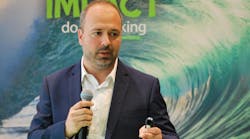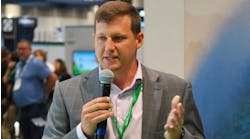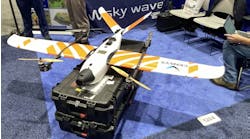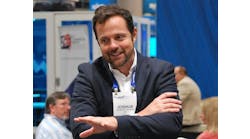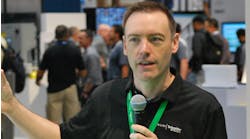AI, analytics help solve industrial water issues
If a company has data on an industrial process, Schneider Electric can help optimize it, Vincent Puisor told attendees of his Monday booth presentation at WEFTEC 2024. And as it turns out, many of those industrial processes have to do with water.
“As many challenges as the customer has, that’s how many use cases we can have,” the Schneider business development manager said. According to Puisor, Schneider can use data-driven analytics and artificial intelligence (AI) to help save energy, materials and water, and the benefits for optimizing industrial water processes have never been more compelling.
For example, 3-5 barrels of water are needed for every barrel of crude oil pumped from the ground. The semiconductor industry uses 12,000 cubic meters of ultra-pure water per day to clean silicon wafers. Water accounts for 15% of total spend by mining companies. Six hundred billion liters/year of water are used by five global food & beverage companies. And 25 billion cubic meters of water will be needed annually to support green hydrogen production by 2030.
Schneider uses real-time monitoring and analytics to provide enhanced visibility of an operation’s water usage, quality and treatment processes. Schneider can also use AI to help optimize operations and identify predictive maintenance opportunities.
One way that Schneider helps clients manage their water challenges is with water balance modeling. This technique uses mathematical modeling to calculate a company’s net water consumption—whether it ultimately uses or accumulates water from its operations. These models evaluate the components of the company’s hydrologic cycle and the interactions between them, giving Schneider and its partners insights on how those operations can be improved.
As an example, Puisor provided a case study using a desalination plant in Saudia Arabia that has a water production of 400,000 cubic meters of water per day. Schneider set out to help the company accomplish three goals:
- Reduce chemical dosage during the pre-treatment phase
- Create an optimized cleaning schedule for the plant’s reverse osmosis membranes, and
- Reduce energy consumption of the reverse osmosis process.
Schneider’s results included:
- Recommendations that included a 4 to 7 percent reduction in chemical dosing
- Creating a predictive maintenance model that can identify RO membrane fouling 21 days in advance
- Recommendations that included extending the life of RO membranes by as much as a year, and
- Suggestions that show a 1 to 3 percent reduction in energy costs for the same level of production at the plant.
“We can really look at sustainability across the whole process,” Puisor said.
